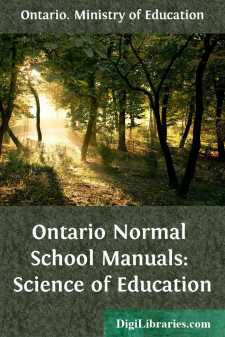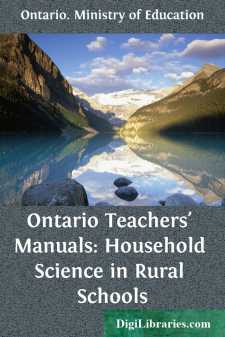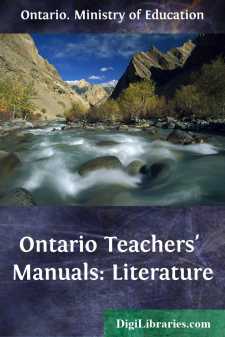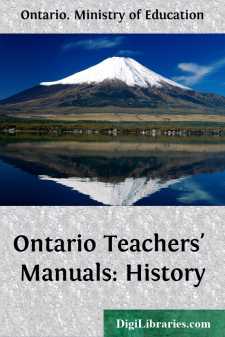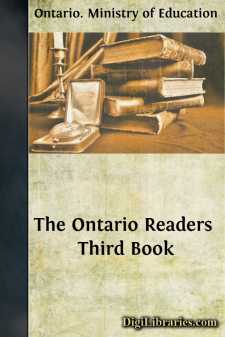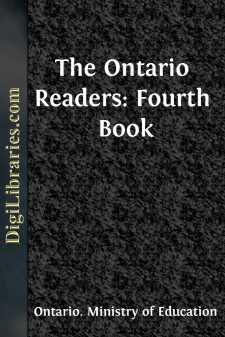Categories
- Antiques & Collectibles 13
- Architecture 36
- Art 48
- Bibles 22
- Biography & Autobiography 813
- Body, Mind & Spirit 141
- Business & Economics 28
- Children's Books 12
- Children's Fiction 9
- Computers 4
- Cooking 94
- Crafts & Hobbies 4
- Drama 346
- Education 46
- Family & Relationships 57
- Fiction 11826
- Games 19
- Gardening 17
- Health & Fitness 34
- History 1377
- House & Home 1
- Humor 147
- Juvenile Fiction 1873
- Juvenile Nonfiction 202
- Language Arts & Disciplines 88
- Law 16
- Literary Collections 686
- Literary Criticism 179
- Mathematics 13
- Medical 41
- Music 40
- Nature 179
- Non-Classifiable 1768
- Performing Arts 7
- Periodicals 1453
- Philosophy 64
- Photography 2
- Poetry 896
- Political Science 203
- Psychology 42
- Reference 154
- Religion 513
- Science 126
- Self-Help 83
- Social Science 81
- Sports & Recreation 34
- Study Aids 3
- Technology & Engineering 59
- Transportation 23
- Travel 463
- True Crime 29
Ontario Normal School Manuals: Science of Education
Description:
Excerpt
CHAPTER I
Value of Scientific Knowledge.—In the practice of any intelligent occupation or art, in so far as the practice attains to perfection, there are manifested in the processes certain scientific principles and methods to which the work of the one practising the art conforms. In the successful practice, for example, of the art of composition, there are manifested the principles of rhetoric; in that of housebuilding, the principles of architecture; and in that of government, the principles of civil polity. In practising any such art, moreover, the worker finds that a knowledge of these scientific principles and methods will guide him in the correct practice of the art,—a knowledge of the science of rhetoric assisting in the art of composition; of the science of architecture, in the art of housebuilding; and of the science of civil polity, in the art of government.
The Science of Education.—If the practice of teaching is an intelligent art, there must, in like manner, be found in its processes certain principles and methods which may be set forth in systematic form as a science of education, and applied by the educator in the art of teaching. Assuming the existence of a science of education, it is further evident that the student-teacher should make himself acquainted with its leading principles, and likewise learn to apply these principles in his practice of the art of teaching. To this end, however, it becomes necessary at the outset to determine the limits of the subject-matter of the science. We shall, therefore, first consider the general nature and purpose of education so far as to decide the facts to be included in this science.
CONDITIONS OF GROWTH AND DEVELOPMENT
A. Physical Growth.—Although differing in their particular conception of the nature of education, all educators agree in setting the child as the central figure in the educative process. As an individual, the child, like other living organisms, develops through a process of inner changes which are largely conditioned by outside influences. In the case of animals and plants, physical growth, or development, is found to consist of changes caused in the main through the individual responding to external stimulation. Taking one of the simplest forms of animal life, for example, the amoeba, we find that when stimulated by any foreign matter not constituting its food, say a particle of sand, such an organism at once withdraws itself from the stimulating elements. On the other hand, if it comes in contact with suitable food, the amoeba not only flows toward it, but by assimilating it, at once begins to increase in size, or grow, until it finally divides, or reproduces, itself as shown in the following figures. Hence the amoeba as an organism is not only able to react appropriately toward different stimuli, but is also able to change itself, or develop, by its appropriate reactions upon such stimulations.
In plant life, also, the same principle holds. As long as a grain of corn, wheat, etc., is kept in a dry place, the life principle stored up within the seed is unable to manifest itself in growth. When, on the other hand, it is appropriately stimulated by water, heat, and light, the seed awakens to life, or germinates. In other words, the seed reacts upon the external stimulations of water, heat, and light, and manifests the activity known as growth, or development. Thus all physical growth, whether of the plant or the animal, is conditioned on the energizing of the inherent life principle, in response to appropriate stimulation of the environment.
A. Simple amoeba.
B. An amoeba developing as a result of assimilating food.
C. An amoeba about to divide, or propagate.
B. Development in Human Life.—In addition to its physical nature, human life has within it a spiritual law, or principle, which enables the individual to respond to suitable stimulations and by that means develop into an intelligent and moral being. When, for instance, waves of light from an external object stimulate the nervous system through the eye, man is able, through his intelligent nature, to react mentally upon these stimulations and, by interpreting them, build up within his experience conscious images of light, colour, and form. In like manner, when the nerves in the hand are stimulated by an external object, the mind is able to react upon the impressions and, by interpreting them, obtain images of touch, temperature, and weight....


